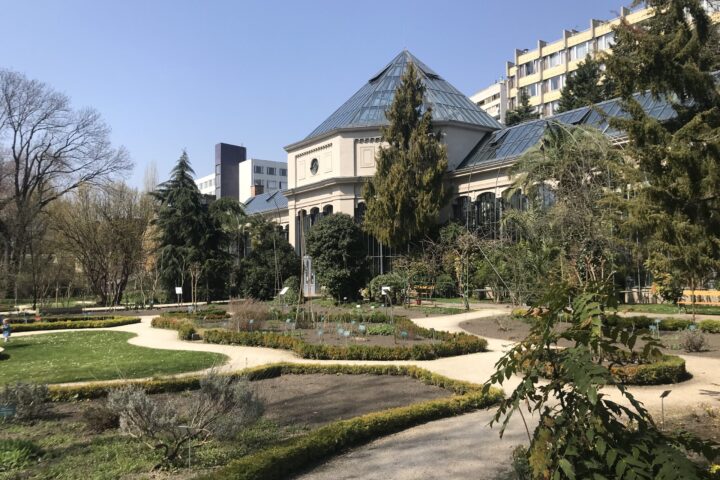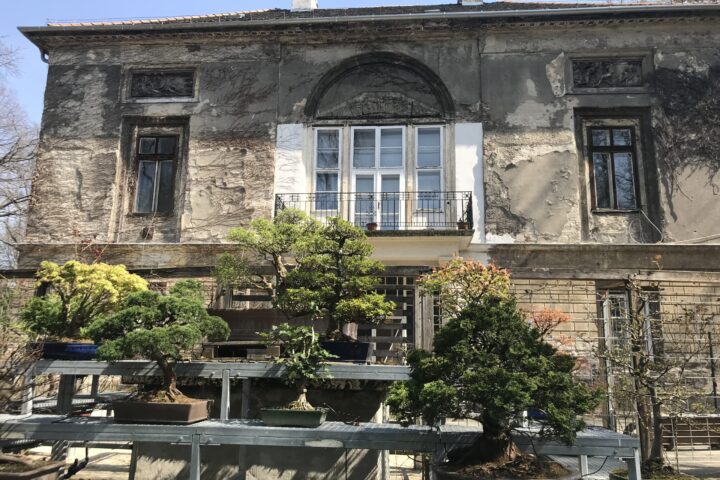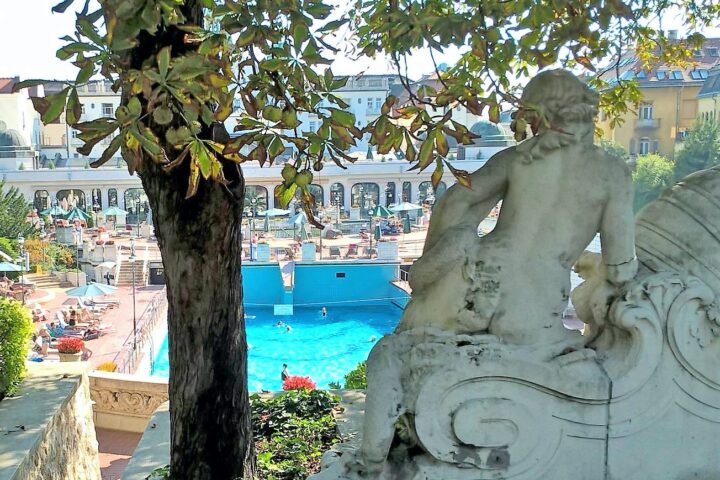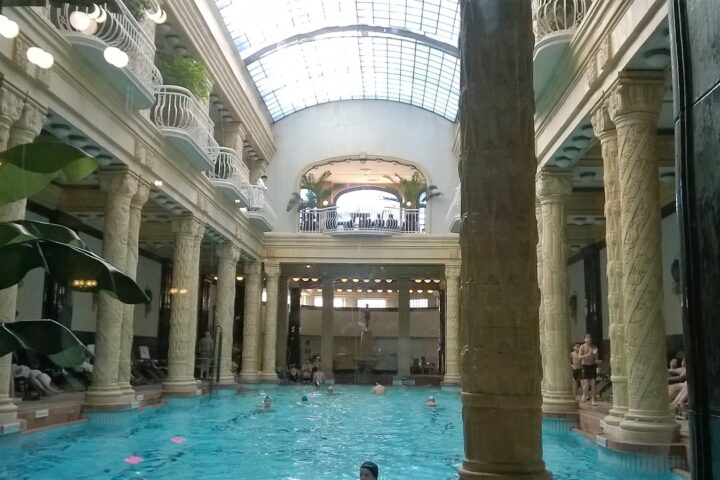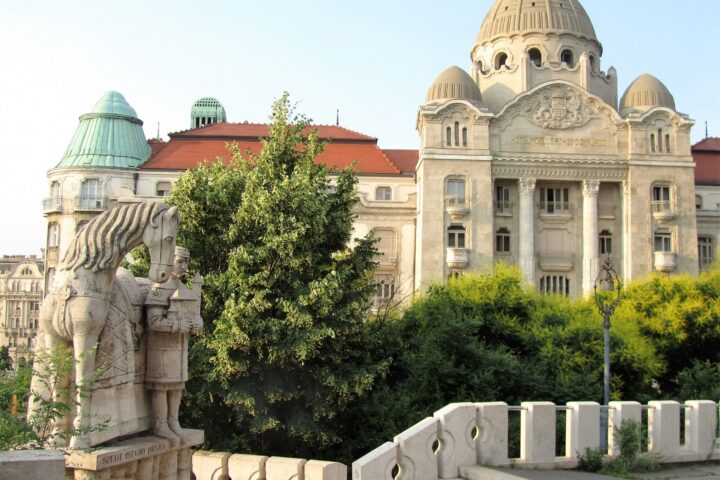Bathing and bathing culture have always been an important part of our everyday life. According to a survey I've just read 30% of the locals go to the baths regularly. It's fun, very relaxing and has healing effects, too. I can show you some of the most authentic Budapest baths if you join me for a tour. The Gellért bathhouse is the most elegant bath complex of Budapest. The building is one of the most amazing pieces of the Budapest Art Nouveau and opened in 1918. When you have a look at the richly ornate facade of the building its hard to imagine that before the construction of the elegant hotel, the place had been referred to as to the muddy baths, where both people and animals had their regular bath. The thermal baths are fed by the mineral hot springs of the Gellért hill. The water is rich in calcium, magnesium, hydrocarbonate and sulfate. The water temperature varies from 35 °C to 40 °C. Don't miss the Turkish section where the walls are so nicely decorated with colorful mosaics. The bath can be visited throughout the year, if you happen to be in Budapest in the summer, you can also take advantage of the outdoor wave pool.
Bathing and bathing culture have always been an important part of our everyday life. According to a survey I’ve just read 30% of the locals go to the baths regularly. It’s fun, very relaxing and has healing effects, too. I can show you some of the most authentic Budapest baths if you join me for a tour.
The Gellért bathhouse is the most elegant bath complex of Budapest. The building is one of the most amazing pieces of the Budapest Art Nouveau and opened in 1918. When you have a look at the richly ornate facade of the building its hard to imagine that before the construction of the elegant hotel, the place had been referred to as to the muddy baths, where both people and animals had their regular bath.
The thermal baths are fed by the mineral hot springs of the Gellért hill. The water is rich in calcium, magnesium, hydrocarbonate and sulfate. The water temperature varies from 35 °C to 40 °C.
Don’t miss the Turkish section where the walls are so nicely decorated with colorful mosaics. The bath can be visited throughout the year, if you happen to be in Budapest in the summer, you can also take advantage of the outdoor wave pool.
